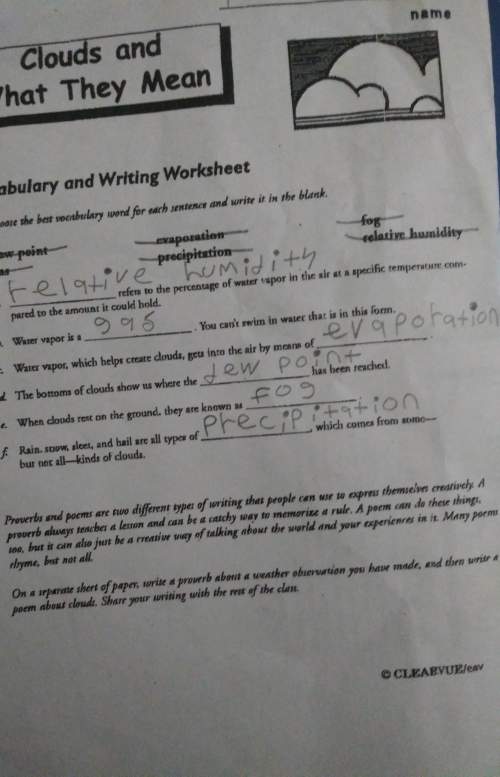
Physics, 28.12.2019 23:31 journeyburks07
Aball rolls from point a to point b. the total energy of the ball at point a isn’t the same as the sum of its potential energy and kinetic energy at point b. which statement best explains this situation? it just goes downhill
a. the rolling ball doesn’t follow the law of conservation of energy.
b. some of the ball’s energy is transformed to thermal energy.
c. the rolling ball loses some of its energy because of gravity.
d. the ball absorbs some of its own potential energy.

Answers: 3


Another question on Physics

Physics, 22.06.2019 06:30
The coulomb's law explains which of the following? select all the force between two charged objects is inversely proportional to the charge on each object. the force between two charged objects is directly proportional to the charge on each object. the force between two charged objects is directly proportional to the distance separating them. the force between two charged objects is inversely proportional to the square of the distance separat coulomb's law is similar to newton's 2nd law. if the force between two objects is f and the charge on both objects is doubled, the new force between the would now be 2f. if the force between two objects is 2f and the distance separating them is doubled, the new force between the objects would now o the be zf.
Answers: 3

Physics, 22.06.2019 11:00
Aperson walks first at a constant speed of 4.89 m/s along a straight line from point a to point b and then back along the line from b to a at a constant speed of 2.95 m/s. what is the average speed over the entire trip?
Answers: 1

Physics, 22.06.2019 11:00
I'm thinking it's 2 you are asked to explain the earth's magnetic field. which is the best reply? 1. the earth's magnetic south is similar to the north pole of a magnet. 2. the earth's core has a strong magnetic charge similar to the south pole of a magnet. 3. the earth's geomagnetic south is similar to the south pole of a magnet. 4. the earth's magnetic charge is not centered at either pole; it varies based on location.
Answers: 1

Physics, 22.06.2019 11:30
With the simplified model of the eye, what corrective lens (specified by focal length as measured in air) would be needed to enable a person underwater to focus an infinitely distant object? (be careful-the focal length of a lens underwater is not the same as in air! assume that the corrective lens has a refractive index of 1.62 and that the lens is used in eyeglasses, not goggles, so there is water on both sides of the lens. assume that the eyeglasses are 1.90
Answers: 1
You know the right answer?
Aball rolls from point a to point b. the total energy of the ball at point a isn’t the same as the s...
Questions

Chemistry, 26.02.2021 21:40

Mathematics, 26.02.2021 21:40


Mathematics, 26.02.2021 21:40


Chemistry, 26.02.2021 21:40


Chemistry, 26.02.2021 21:40

Mathematics, 26.02.2021 21:40

Mathematics, 26.02.2021 21:40

Mathematics, 26.02.2021 21:40

Mathematics, 26.02.2021 21:40

Mathematics, 26.02.2021 21:40

Social Studies, 26.02.2021 21:40

Physics, 26.02.2021 21:40


Mathematics, 26.02.2021 21:40

Mathematics, 26.02.2021 21:40

Mathematics, 26.02.2021 21:40

Mathematics, 26.02.2021 21:40




